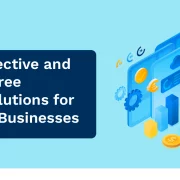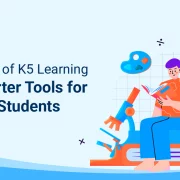
How to Solve Your Training Effectiveness Problems with LMS?
Summary
Explore how an LMS tackles major training challenges like irrelevant content, high costs, and low engagement in this essential guide for learning professionals.
Increasing the effectiveness of training programs while allocating training resources is one of the top priorities for any organization. The simple reason for this is the fact that a training program that is optimized to save time and cost benefits both the learners and companies in the long run.
However, gathering training data and ensuring its effectiveness can be a challenging task for most organizations. This post explores the challenges you might face in tracking training data, some proven solutions for overcoming those challenges, and key steps for evaluating training effectiveness.
Table of Contents:
- How an LMS Can Help You Resolve Your Training Effectiveness Problems
1. Challenge – Irrelevant Training Material
2. Challenge – High Training Costs
3. Challenge – Busy Employee Schedules
4. Challenge – A Dispersed Workforce
5. Challenge – Lack of Engagement - In Conclusion
How an LMS Can Help You Resolve Your Training Effectiveness Problems
An LMS can cater to a range of training effectiveness challenges and offer multiple benefits to both learners and organizations. Let’s look at them in detail here:
1. Challenge – Irrelevant Training Material
When it comes to organizational learning and training, learners are most excited about the relevance of training in their day-to-day work or its applicability to their respective career goals. However, training content that is not updated or relevant can lead to no results in terms of both employee upskilling and alignment of learning with overall business objectives.
How to Solve?
Regardless of the time learners spend on training – daily, weekly, or annually – make sure to perform content audits regularly to identify which learning material is relevant and which needs updating. Leveraging a robust learning management system enables you to store all your training content efficiently and revisit it when needed to make updates.
To further improve the relevance of your training material and ensure that it is up to date, you can personalize the same by using LMS features that enhance the overall learner experience. Among these include:
- Leveraging individualized learning paths
- Categorizing learning outcomes into essential/must and nice-to-have for individual roles undergoing training. To engage your learners more with nice-to-have content, you can use techniques such as gamification through rewards, badges, and points
- Conducting post-training/learning feedback surveys to determine the effectiveness of the content as well as what learners found most useful and identify the areas of improvement
- Focusing on content targeted by the learner role or content that is localized to their specific region or country
Also read, How to Leverage your LMS to Create a Blended Learning Environment.
2. Challenge – High Training Costs
One of the significant problems most L&D programs face is the high costs associated with them and proving training ROI, especially when you don’t have anything more than qualitative data and anecdotal evidence of the impact of your training program.
How to Solve –
One of the best ways to manage the costs associated with training is to move your training online. This not only eliminates the need for travel and venue costs but also cuts down on facilitation costs. You can do this by leveraging a high-performing and cost-effective LMS from a renowned vendor.
As a part of the L&D team in your organization, you can choose the training material/workshops where classroom training is essential and upload the remaining material as learning nuggets on your LMS.
The idea here is to strike the right balance and ensure that you move most of your content to an LMS, thus saving costs and also allowing your trainers to spend quality time with learners on the more important engagements.
3. Challenge – Busy Employee Schedules
Employees often find it challenging to take time out for training due to hectic schedules. Besides, traditional learning involves a lengthy process of bringing all learners and experts under one roof and making arrangements for learning resources.
How to Solve?
An LMS can be a great tool here as it helps solve the problem of hectic employee schedules through the quick distribution of knowledge to various stakeholders using a micro-learning approach and delivering content in small, nugget-sized chunks. This can be anything from infographics, short videos, checklists, GIFs, and more.
Since an LMS is easy to develop and also has different content formats as well as an interactive approach, it also reduces the time required to internalize the knowledge.
The shorter duration of each course also means it’s a much simpler and faster way to retain bite-sized information. Another important consideration here is to optimize your training for smart or mobile devices as it allows learners to access the content anytime, anywhere.
Also read, how to solve training effectiveness problems with LMS.
4. Challenge – A Dispersed Workforce
Another common challenge related to training effectiveness is a dispersed workforce struggling with the logistical difficulties of traditional learning. For instance, arranging a simple training course for your team can involve bringing several experts from around the world to a different location, getting all the resources ready in one place, booking a space, and more. This can both reduce the effectiveness of training and also make the delivery of these courses unpredictable.
How to Solve?
An LMS or learning management system, because of its online accessibility, can resolve all of these issues. Since no physical presence is required for these courses and the learning process simply requires employees to log into the software or upload relevant courses, it helps maintain consistency in distributing knowledge. You can do this by:
- Using various social tools such as webinars, online forums, video conferences, etc., to unify the teams spread across the globe
- Clearly state your training goals from the beginning so that everyone in the team has set expectations of the training as well as the expected outcomes.
- Leveraging training to build two-way communication where webinars and online forums offer a space to ask questions, raise concerns, or share individual experiences.
5. Challenge – Lack of Engagement
When it comes to learning and development, every employee has their own learning pace and retention power. Lack of employee engagement is a common challenge that an increasing number of organizations face in a traditional learning setup, where learners often have to adapt to a standardized learning pace.
How to Solve?
The fact that LMS courses are self-paced is a huge advantage as it allows individuals to learn as per their own schedules and choose their unique learning pace.
Apart from this, a good learning management system also gives you the benefit of various content formats and different interactive learning methods such as quizzes, discussion forums, and other informal live online spaces for learners to interact. All of these help in building better engagement for your learners as well as fit their unique learning curves.
Moreover, to enhance behavioral engagement, it is important to communicate learning outcomes upfront and incorporate various practical learning activities. This will allow you to establish an active learning culture and also ensure that more learners understand the objective and participate in learning activities.
Know more, How to Choose the Best LMS Platforms for Business?
In Conclusion
In today’s fiercely competitive marketplace, where customers don’t think twice before switching brands for a better experience, employee training should be a top priority for every organization.
To create an excellent learning culture that fosters customer delight, it is best to invest in Learning Management Systems and other learning tools that can offer scalable customer experience training to your employees.
Trusted by an increasing number of teams, Hurix offers one of the best LMS solutions to build and deliver training programs. Right from new hire onboarding to employee upskilling, Hurix LMS allows you to develop and deliver courses within no time.
To learn more about LMS from Hurix, Contact us today.

SVP & Head – Hurix Technology Solutions
Global Delivery head with 25 years of working experience in NYC investment banks and fintech companies. Hands-on technology delivery management and program management, accountable for stakeholder relationships, Strategic roadmap, P&L, Revenue growth, Account Management, and employee satisfaction.







